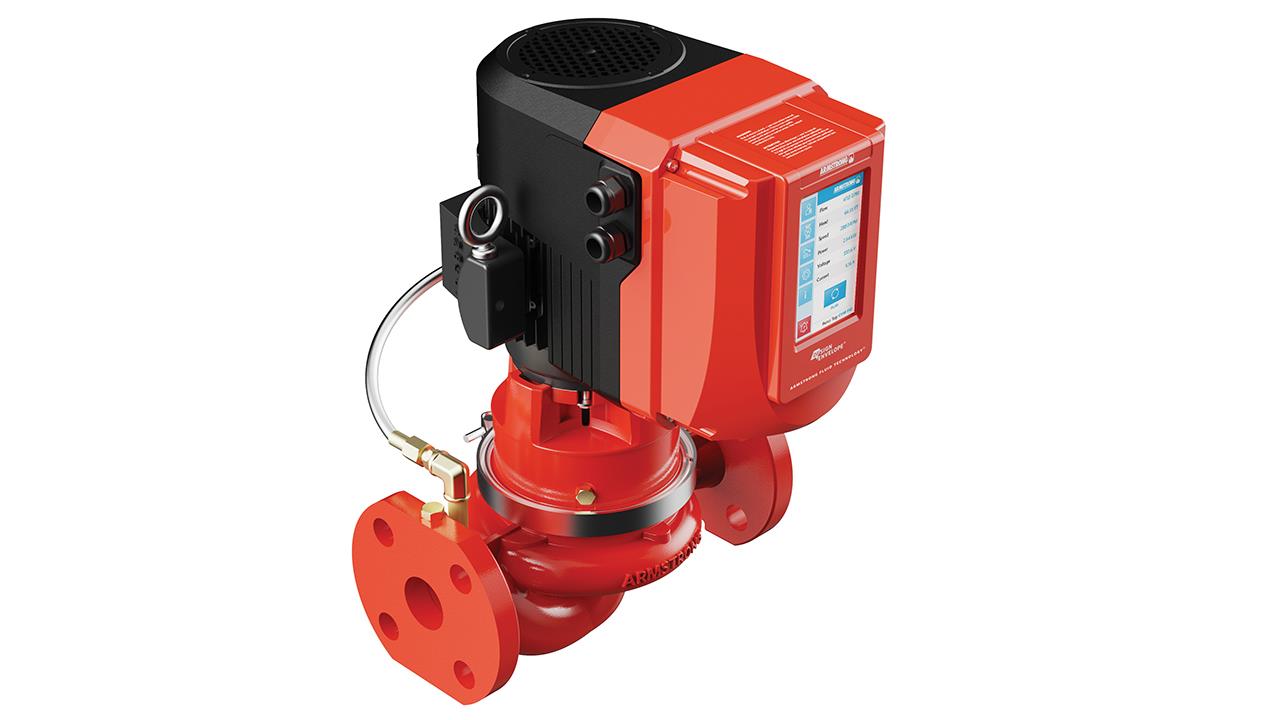

Over the last year, long term sustainability has become a major priority in design of single-phase systems, to tackle the rapidly escalating costs of energy. This has led to a major rethink in relation to the circulators used in single-phase systems.
The decision on whether to use single-phase or three-phase power is usually based on the load capacity and the consistency of power delivery required. Many heating and water recirculation systems in commercial and residential buildings use single-phase power, as well as groundwater loops and geothermal systems. The conventional approach for these applications has been to install low cost, light-duty circulators.
Although a few pounds may be saved in installation costs, there will likely be significantly higher running costs of pumps throughout their lifetime. Since driving down energy consumption has become a far more urgent requirement, focusing on lifecycle analysis is the only sensible way forward. This can be a challenge, however, when it comes to single-phase applications.
Traditionally, the light-duty circulators used in these systems have been low on cost but also low on functionality.
Because three-phase systems tend to be the most energy-intensive applications, the pump models developed for them have traditionally incorporated more sophisticated control and connectivity technology in comparison to single-phase circulators. In addition, many of the light-duty, single-phase circulators are not repairable, and are designed for only a few years of operation, which results in the need to replace the systems more frequently. So, how can you deliver a single-phase system that meets today’s demand for better lifecycle performance?
Alternative pump options
In the last year, some of the energy efficiency and connectivity advantages you might associate with pumps for larger scale commercial applications have been incorporated into circulators for single-phase electrical power. So, if you’re looking for a lower cost for the pump across its lifecycle, then this is a good time to review the features available from the latest generation of single-phase pumps.
For example, some models now incorporate on-board inverters, making them capable of adjusting automatically to changes in load. Design point and setpoints can be adjusted to match on-site conditions, and there is the option of sequencing the pumps to operate along their peak efficiency natural curve for all load conditions.
Equipment loading can be optimised across the system as a whole, to achieve significant reductions in energy consumption. The pumps also incorporate a constant flow function, for maintaining a precise flow rate in recirculation applications.
Another advantage is the far greater connectivity of the latest generation of single-phase circulators. Being able to see how system components are performing in real time is crucial to reducing energy costs and improving the environmental performance of buildings.
With greater access to information, operators can make changes and address issues to optimise HVAC performance. Online trending and analysis across multiple parameters on single pumps, or on an aggregated basis for multiple pumps, can assist in identifying performance degradation, and facilitate a predictive and proactive approach. The technology could report issues such as excessive vibration, pump in hand, risk of cavitation or a dead head, for example, should they start to occur.
The performance management technology for this new generation of single-phase pumps is designed for compatibility with industry-standard BMS, EMS, or CMMS solutions. In addition to optimising energy efficiency, access to this level of connectivity can increase pump availability and reliability, reducing unexpected failures, and enabling early problem detection. Lastly, it helps organisations report their energy use and environmental performance.
In addition to improving a site’s carbon footprint by reducing energy consumption, this new generation of pumps can open up opportunities to reduce embodied carbon. The low cost circulators traditionally installed in single-phase applications can score poorly in relation to embodied carbon, in that they are often not repairable, leading to comparatively high replacement rates. By contrast, the latest generation of single-phase pumps are built to last, with a longer expected lifecycle.
If you'd like to keep up-to-date with the latest developments in the heating and plumbing industry, why not subscribe to our weekly newsletters? Just click the button below and you can ensure all the latest industry news and new product information lands in your inbox every week.